Rare Rides Icons: The History of Imperial, More Than Just a Car (Part X)

This 10th installment of our Imperial coverage finds us at a turning point in its styling. Virgil Exner had been fired but was allowed to stay on as a design consultant at Chrysler. Exner’s immediate replacement was Elwood Engel, who’d designed the 1961 Lincoln Continental and then jumped ship when he was not promoted at Ford. Chrysler execs wanted out of Exner’s winged, googly-eyed stylistic cave, and Engel took the aged D-body in a very different direction for 1964.
Underneath, the 1964 Imperial was still the same D-body it had been since the 1957 model year. Still, a body-on-frame holdout as the rest of the Chrysler and company lineup went unibody from 1960 onward. The renewed Engel-designed Imperial for 1964 wore the Series VY1 (M, H) designation, as there was no longer a “base model” Imperial Custom that used an L as its series indicator. The revised Imperial’s most notable styling characteristic was its resemblance to the Lincoln Continental. Given the sales slump Imperial had experienced under the last handful of Exner years, executives at Chrysler were undoubtedly on board with a Lincoln-esque look.
At the front end, the expected set of four round headlamps was still present, this time encased in a mesh chrome grille, split into two pieces and reminiscent of the Imperial from 1962. The grilles had a heavily chromed surround, but the look was more upright and horizontal than before. The bumper was slimmer and had less ornamentation, and “battering ram” detailing appeared at either corner of the front bumper for the first time. The hood of the ’64 was much flatter than before and used minimal chrome trim. Exner’s sweeping body line trim strip was replaced by a more horizontal strip carried along the almost singular body crease. Said trim now ended vertically at the front bumper instead of wrapping horizontally around the hood. Imperial script logos were still present, but were moved lower on the front fenders, and made smaller and less dramatic. LeBaron trims said LeBaron on their fenders and had an Imperial logo.
The Imperial’s rear was changed dramatically for 1964 and adopted a much simpler look than before. Chrome trim was less prevalent, and body line chrome ended vertically at the bumper, much like the front end. Imperial logos here changed from script to block lettering (like a Continental), and the integrated false continental kit bulge moved from the trunk lid to the bumper and was square instead of circular.
A large winged Imperial logo appeared in the center of the bumper and served as the fuel filler door so as not to disturb the smooth body lines. The bumper also mirrored the battering rams of the front. Tail lamps were rocket-like and pointed, now horizontal instead of vertical, and integrated into the bumper where they’d never been before. Rooflines weren’t changed a lot from the 1963 Imperial, as they were one of the changes Engel first applied. Though it looked plenty different, the 1964 imperial was the same 227.8-inch length as the prior year. Width dropped slightly from 81.7 to an even 80 inches. Height remained the same as before at 56.8 inches.
Things were simplified on the interior as well. The steering wheel was no longer a square shape, and the dash moved on from a finned appearance that saw near-vertical button pods at either side of the wheel. Instead, the dash had a uniform horizontal look, with full-width chromed grille trim in vertical slats. Buttons were simpler and arranged under the horizontal speedometer in a straight line. Gone as well as the space age electroluminescent dash lighting (a complicated, five-layer design), but that was probably more a cost-saving than a design need.
Imperial’s pricing remained steady over the years, and in 1964 a Crown four-door asked $5,581 ($50,201 adj.) while a four-door in LeBaron trim was $6,455 ($58,063 adj.). The very expensive and hand-built Crown Imperial Limousine was still in production and sold 10 examples in ’64 at a cost of $18,500 ($166,409 adj.).
On the technology and luxury front, rear window defroster vents became standard equipment. Also made standard were power windows, and steering wheels had an optional adjustment for greater driver comfort.
All hardtop Imperials offered a vinyl roof option, and trim levels were simplified this year. The base Crown (M) carried no other trim name, while the upscale version was still the LeBaron (H). Base Crowns were available as two-door and four-door hardtops, as well as the convertible. LeBaron was restricted to four-door hardtop guise. The Crown convertible came with additional standard equipment like power seats, steering, brakes, and a padded dash.
The aging D-body received no notable mechanical changes for 1964, as the generation approached its end of life. Still under the hood was the 413 cubic-inch (6.8L) Wedge style V8 that debuted in 1959, and the TorqueFlite A727 from 1962. Despite the lack of mechanical advancement, the Engel styling did the trick: Imperial sales jumped from 14,121 in 1963 to 23,295 in 1964, an increase of over 60 percent. Imagine Exner’s chagrin as he finished out his time at Chrysler, relegated to a consultant’s office.
The Imperial in its new clothes was reviewed favorably by the automotive press of the day and earned a reputation as being nice to drive; more of a driver’s car than its domestic barge competition. Given the renewed sales success and the age of its platform, the Imperial had only minimal expected changes for 1965 as it became Series AY1 (M,H). The quad headlamps were set into their own chromed bezels instead of the grille itself and had glass covers over them with an etched horizontal slat design.
The grille lost the painted split in the middle and swapped for a full-width design of vertical and horizontal chromed slats, and four distinct sections separated by a chrome crosshair. The rear end carried over from 1964. Inside, the push-button transmission was tossed for a column shifter. Interiors also benefitted from the addition of century-old Claro walnut trim (Northern California black walnut). Height increased slightly over the prior year, to 57.2 inches, making it the second tallest D-body since its debut year in 1957 (57.5″). Sales in this carryover year fell to 16,422
In 1966 it was time for a D-body hurrah, as Imperial was on its last independent platform for some time. The Series BY1 (M,H) carried the same headlamp design as before, but etched glass became plain glass with dual 24-karat gold bands around the edges. The grille used a slats design once again but looked busier overall as the slats became smaller. The grille was separated into 18 different sections instead of four. The 1967 Imperial was one of the last cars (if not the last) on the market that used a wrap-around windshield design.
The rear was adjusted slightly in ’66, as the continental bulge on the trunk lid got softer and less pronounced – a sign the feature was falling out of fashion. Imperial block lettering at the rear reverted to an Imperial cursive script, much more subdued than prior scripts. Taillights grew nearly twice as large this year, as the previously integrated reversing lamps moved down into the bumper and resided as odd squares. Luxury customers were beginning to expect more wood trim, so much more walnut appeared on Imperial’s dashboard. And in its final year, the D-body Imperial received a new engine: The Wedge 413 was replaced by a Wedge 440 (7.2L). Horsepower increased from 340 to 350, and the 440 would be the last of Chrysler’s RB series engines. Sales dropped slightly to 13,752 in this final year.
The third generation imperial was all-new for 1967, and Elwood Engel got to style Chrysler’s flagship from the ground up this time. More on that in Part XI.
[Images: Imperial]

Interested in lots of cars and their various historical contexts. Started writing articles for TTAC in late 2016, when my first posts were QOTDs. From there I started a few new series like Rare Rides, Buy/Drive/Burn, Abandoned History, and most recently Rare Rides Icons. Operating from a home base in Cincinnati, Ohio, a relative auto journalist dead zone. Many of my articles are prompted by something I'll see on social media that sparks my interest and causes me to research. Finding articles and information from the early days of the internet and beyond that covers the little details lost to time: trim packages, color and wheel choices, interior fabrics. Beyond those, I'm fascinated by automotive industry experiments, both failures and successes. Lately I've taken an interest in AI, and generating "what if" type images for car models long dead. Reincarnating a modern Toyota Paseo, Lincoln Mark IX, or Isuzu Trooper through a text prompt is fun. Fun to post them on Twitter too, and watch people overreact. To that end, the social media I use most is Twitter, @CoreyLewis86. I also contribute pieces for Forbes Wheels and Forbes Home.
More by Corey Lewis
Latest Car Reviews
Read moreLatest Product Reviews
Read moreRecent Comments
- Bkojote Allright, actual person who knows trucks here, the article gets it a bit wrong.First off, the Maverick is not at all comparable to a Tacoma just because they're both Hybrids. Or lemme be blunt, the butch-est non-hybrid Maverick Tremor is suitable for 2/10 difficulty trails, a Trailhunter is for about 5/10 or maybe 6/10, just about the upper end of any stock vehicle you're buying from the factory. Aside from a Sasquatch Bronco or Rubicon Jeep Wrangler you're looking at something you're towing back if you want more capability (or perhaps something you /wish/ you were towing back.)Now, where the real world difference should play out is on the trail, where a lot of low speed crawling usually saps efficiency, especially when loaded to the gills. Real world MPG from a 4Runner is about 12-13mpg, So if this loaded-with-overlander-catalog Trailhunter is still pulling in the 20's - or even 18-19, that's a massive improvement.
- Lou_BC "That’s expensive for a midsize pickup" All of the "offroad" midsize trucks fall in that 65k USD range. The ZR2 is probably the cheapest ( without Bison option).
- Lou_BC There are a few in my town. They come out on sunny days. I'd rather spend $29k on a square body Chevy
- Lou_BC I had a 2010 Ford F150 and 2010 Toyota Sienna. The F150 went through 3 sets of brakes and Sienna 2 sets. Similar mileage and 10 year span.4 sets tires on F150. Truck needed a set of rear shocks and front axle seals. The solenoid in the T-case was replaced under warranty. I replaced a "blend door motor" on heater. Sienna needed a water pump and heater blower both on warranty. One TSB then recall on spare tire cable. Has a limp mode due to an engine sensor failure. At 11 years old I had to replace clutch pack in rear diff F150. My ZR2 diesel at 55,000 km. Needs new tires. Duratrac's worn and chewed up. Needed front end alignment (1st time ever on any truck I've owned).Rear brakes worn out. Left pads were to metal. Chevy rear brakes don't like offroad. Weird "inside out" dents in a few spots rear fenders. Typically GM can't really build an offroad truck issue. They won't warranty. Has fender-well liners. Tore off one rear shock protector. Was cheaper to order from GM warehouse through parts supplier than through Chevy dealer. Lots of squeaks and rattles. Infotainment has crashed a few times. Seat heater modual was on recall. One of those post sale retrofit.Local dealer is horrific. If my son can't service or repair it, I'll drive 120 km to the next town. 1st and last Chevy. Love the drivetrain and suspension. Fit and finish mediocre. Dealer sucks.
- MaintenanceCosts You expect everything on Amazon and eBay to be fake, but it's a shame to see fake stuff on Summit Racing. Glad they pulled it.



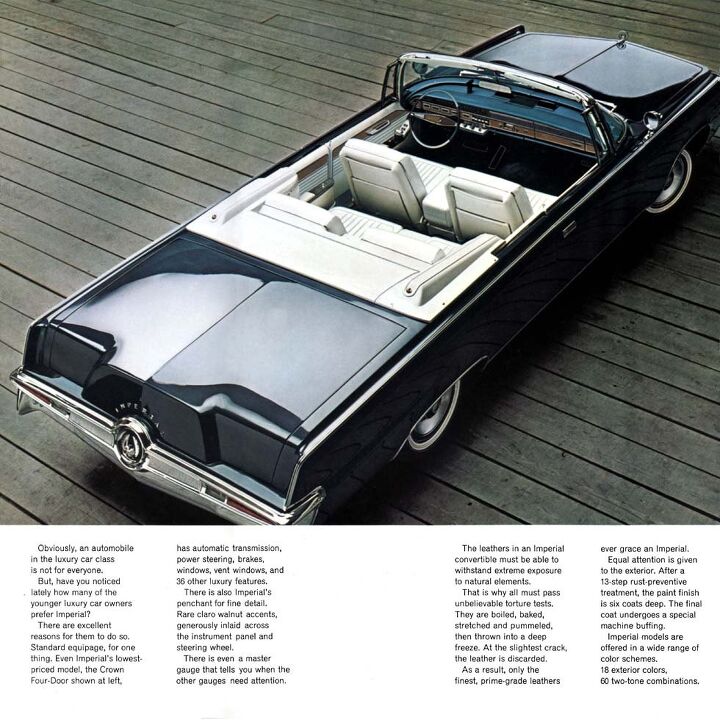




























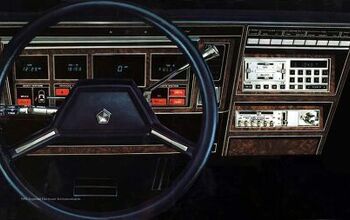
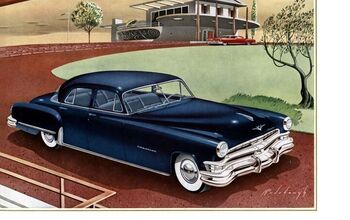
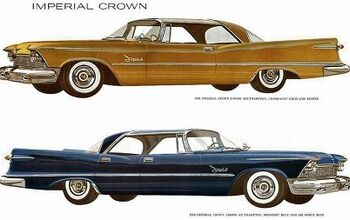
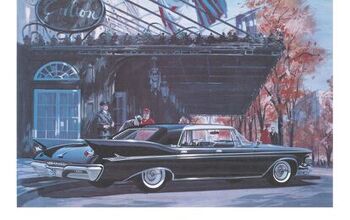










Comments
Join the conversation
The 64 thru 66 Imperials we’re well built, graceful cars. And still competitive with with their contemporaries. What the article doesn’t touch upon is the severe financial issues Chrysler Corp was facing in the early 60s because of the styling misses starting with the 1961 models and disastrous downsizing of the 62 thru 64 Dodge and Plymouth standard/ full size cars. They lost serious market share. Little money was left for the low volume Imperial. The ‘64 Imperial was originally planned for ‘63, but delayed until ‘64, and a new windshield and A Pillar design was cancelled. This then led to the short 2 year run for the ‘67/‘68 Imperial.
Note the influence the '61 Continental and '64 Imperial had on the Cadillac de Ville. By 1965, the tail fins on the de Ville was near horizontal. Minimal ornaments on the coke bottle sides, more angular in nature, less bulges and flairs. One of the few time that FMC and Chrysler had influence on GM.